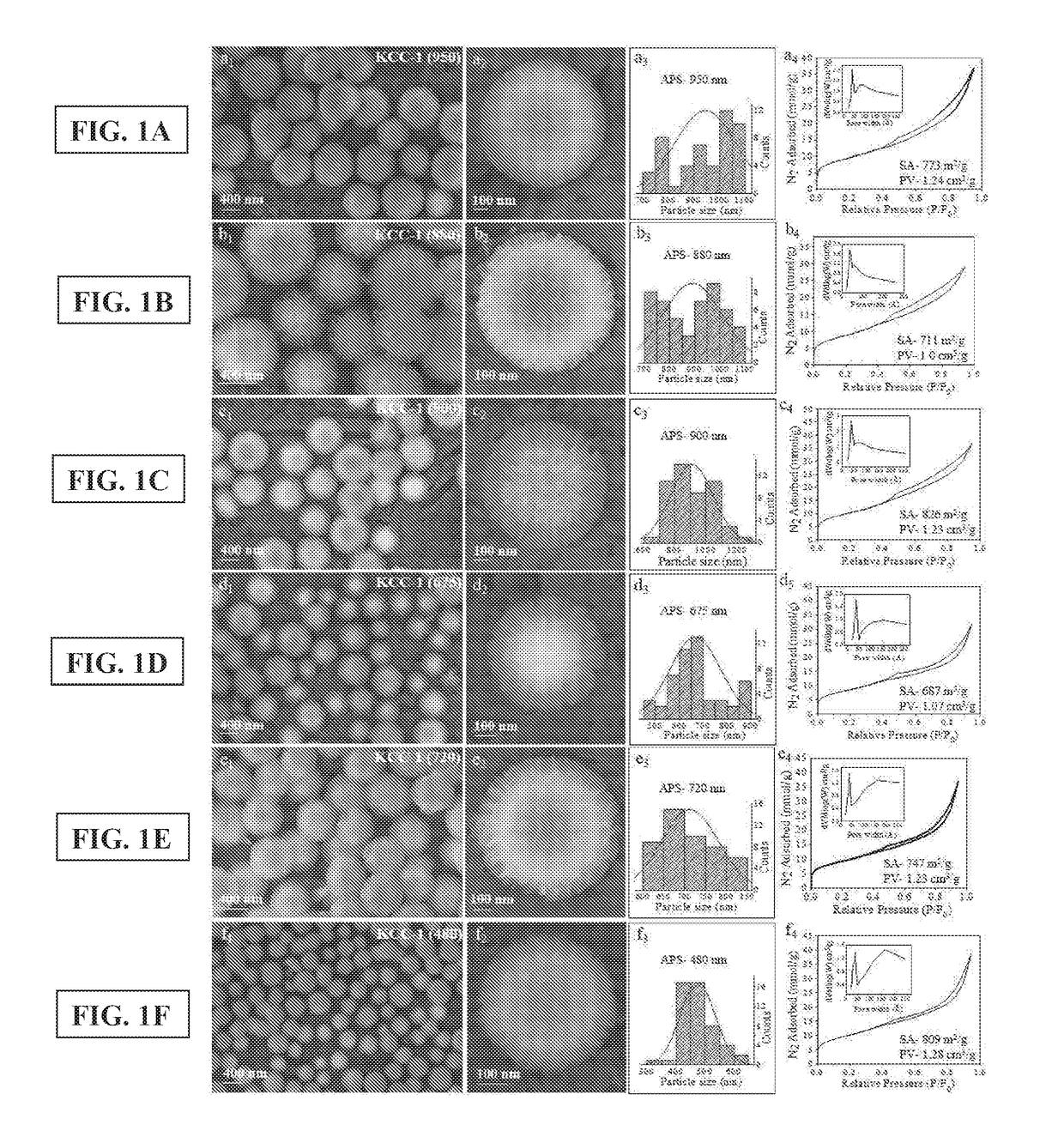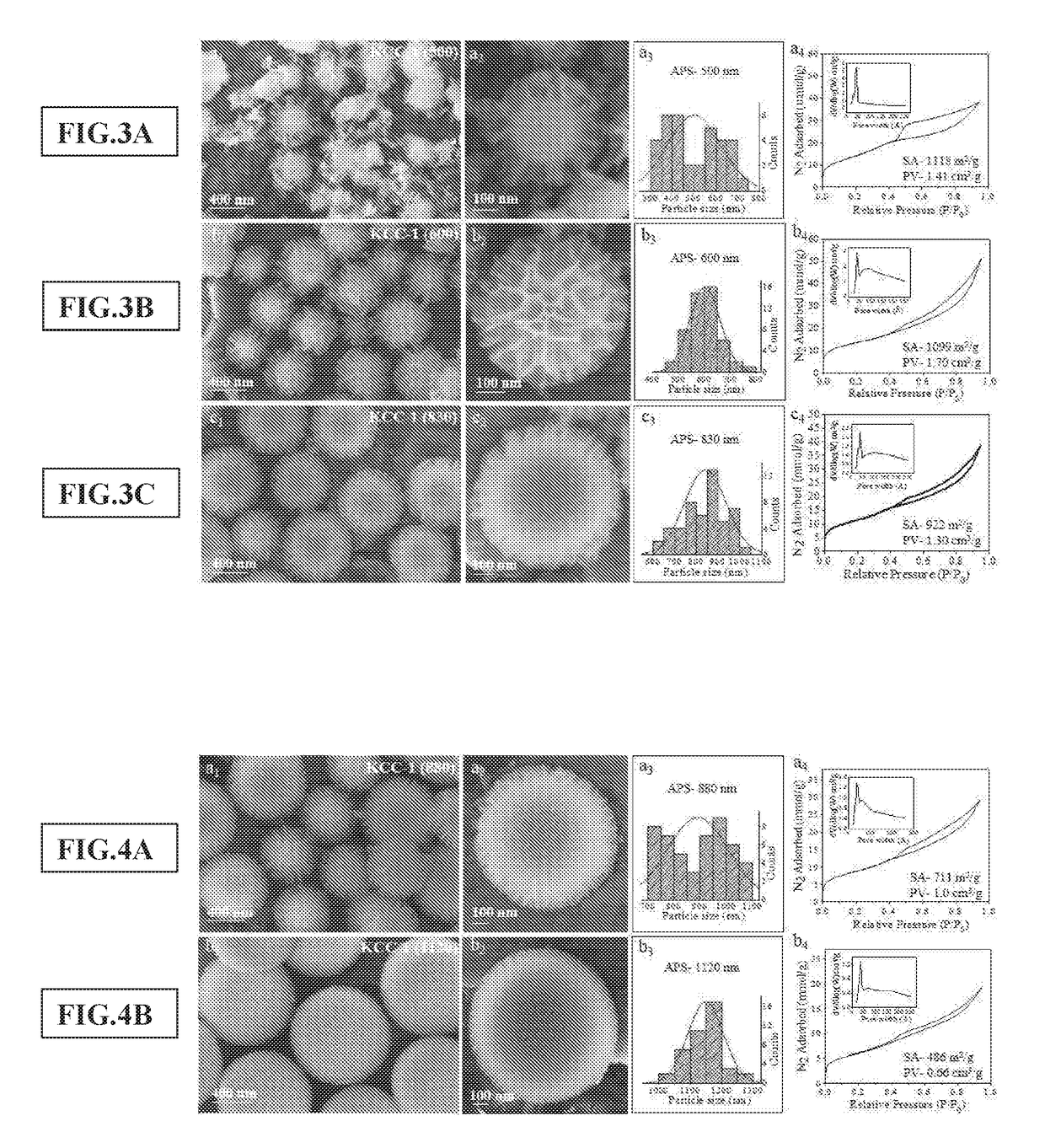Synthesis of fibrous nano-silica spheres with controlled particle size, fibre density, and various textural properties
a technology of fibrous silica nanoparticles and fibres, applied in the field of nanoparticles, can solve problems such as limiting applications, and achieve the effect of greater control of size and morphology
- Summary
- Abstract
- Description
- Claims
- Application Information
AI Technical Summary
Benefits of technology
Problems solved by technology
Method used
Image
Examples
example 1
[0074]Synthesis of Fibrous Silica Nanospheres with Controlled Size and Fiber Density
[0075]Cetyltrimethylammonium bromide (CTAT) and urea were first dissolved in deionized water (300 mL) by vigorously stirring at 1400 rpm for 10 minutes in a 2 L conical flask. To the above mixture, a solution of tetraethoxysilane (TEOS) in cyclohexane (300 mL) was added dropwise in 20 minutes under stirring by using dropping funnel and stirred at 1400 rpm for 10 minutes. 1-Pentanol (18 mL) was then dropwise added to above mixture in 5 minutes under stirring and the resulting mixture was further stirred for several minutes (outside stirring time). The reaction mixture was then transferred into a IL microwave reactor and exposed to microwave radiations (Maximum Power—800 W) to achieve required temperature via 30 minutes ramp from room temperature (23° C.), with 50% stirring speed in the Milestone Ethos-1 microwave reactor. At given temperature, the reaction mixture was maintained (hold time) for few mi...
example 2
Synthesis of Fibrous Silica Nanospheres (KCC-1) Under Reflux Conditions in Open Reactor
[0085]Synthesis of these KCC-1 with varied particle size, fiber density, pore volume and surface area, was also attempted under reflux conditions, by mixing the reactants in open reactor and heating them at their boiling point or lower temperature. The reflux condition in open reactor also enabled synthesis of fibrous silica nanospheres with greater control over particle size, fiber density, surface area, and pore volume.
PUM
| Property | Measurement | Unit |
|---|---|---|
| Particle size | aaaaa | aaaaa |
| Particle size | aaaaa | aaaaa |
| Particle size | aaaaa | aaaaa |
Abstract
Description
Claims
Application Information
 Login to View More
Login to View More - R&D
- Intellectual Property
- Life Sciences
- Materials
- Tech Scout
- Unparalleled Data Quality
- Higher Quality Content
- 60% Fewer Hallucinations
Browse by: Latest US Patents, China's latest patents, Technical Efficacy Thesaurus, Application Domain, Technology Topic, Popular Technical Reports.
© 2025 PatSnap. All rights reserved.Legal|Privacy policy|Modern Slavery Act Transparency Statement|Sitemap|About US| Contact US: help@patsnap.com



